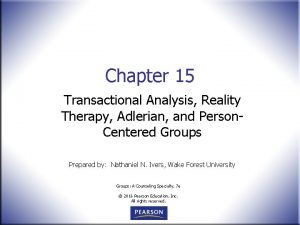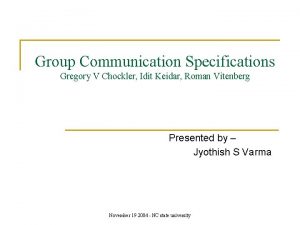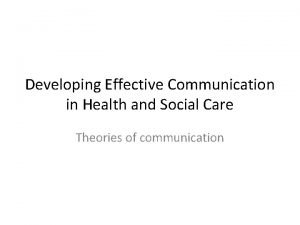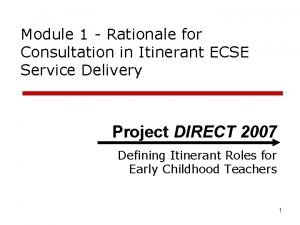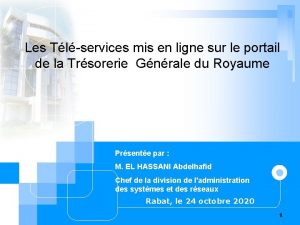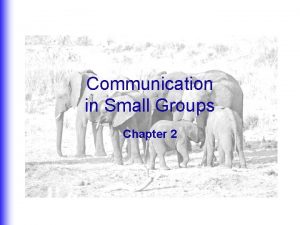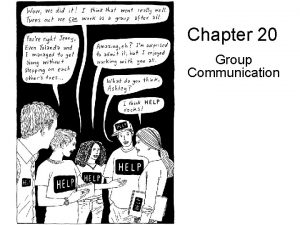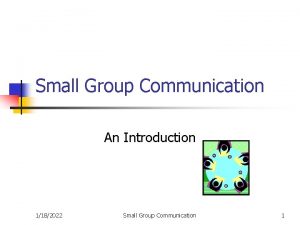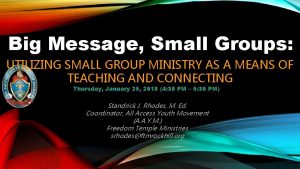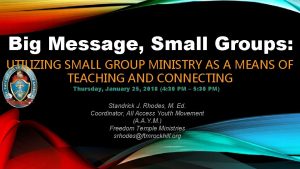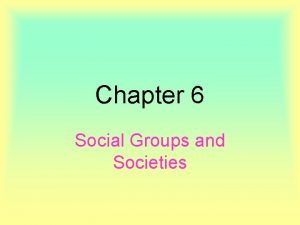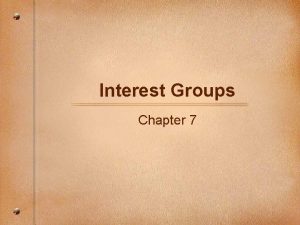Communication in Small Groups Chapter 8 Group Consultation













- Slides: 13

Communication in Small Groups Chapter 8

Group Consultation Scenario

Consultation Scenario • • • Read scenario out loud in group Discuss questions together Write recommendation Each group presents recommendations Together, we discuss differences in advice

Four ways of abiding by group norms Means of Group Influence Full Commitment to Group Norm Result of Influence Follows Norm But Uncommitted Convince through Substantive Discussion Sway through Social Pressure Consensus: Internalizing group’s values to make them one’s own. Conformance: Identification with norms to secure relationships with group members. Most enduring because the new norms shape one’s core attitudes and general behavior. Activated whenever relationships are salient, so long as other members behave consistently. Convergence: Conditional acceptance based on information, incentives, or argument. Compliance: Norms followed to demonstrate submission to authority or pressure. Least enduring because dependent on ephemeral opinions or provisional cost/benefit analyses. Only operates when the group or supervisor applies steady pressure and monitors behavior. * An adapted blend of Jahoda (1956), p. 236, and Hare (1976), pp. 55 -7.

Socialization to Group Norms

Newcomer adheres, then rejects

Newcomer infuses commitment

Accommodating the newcomer

Newcomer sparks ambivalence

Social Identity Theory and the Contact Hypothesis

Intergroup Contact Theory • People with different collective/group identities need to be placed in situations where relevant authorities/institutions permit ingroups and outgroups to work together cooperatively, as equals, to achieve a common goal. • Most effective when – participants choose to take part – activities are intensive (e. g. , sports, projects) – meeting all of the underlined conditions above maximizes the effect

Embedded System Framework Summary

ESF Model of Norms/Symbols/Identity Inter-group conflicts with other local groups Organizational socialization practices Institutional support for inter-group contact Pool of social identities, group archetypes, and salient symbols or dramatic narratives Individualist/ collectivist cultural orientations Task requires intra- and/ or inter-group cooperation vs. competition Equality of member status relationships Nature and strength of group norms Salience of different social identities (and primary group identity) Confidence in one’s independent judgment Participants’ diverse identities and allegiances (including to other groups) Socialization to conform with/ adapt prototypical norms Group cohesion Subjective assessment of group’s qualities Distribution and management of deviance (rejection, norm adjustment) Increase/reduction in inter-group stereotypes and prejudices Symbolic conflict and convergence Exclusion/ departure from the group Dialogue and storytelling
 Small group communication
Small group communication Dewey's reflective thinking model
Dewey's reflective thinking model How are ethnic groups and religious groups related
How are ethnic groups and religious groups related Curious george mbti
Curious george mbti Animal taxonomy tree
Animal taxonomy tree Making small groups work
Making small groups work Types of transactions in transactional analysis
Types of transactions in transactional analysis Communication patterns in groups
Communication patterns in groups Communication groups
Communication groups Theories of communication in health and social care
Theories of communication in health and social care Caplan's four types of consultation
Caplan's four types of consultation Hsa grafton
Hsa grafton Triadic consultation model
Triadic consultation model Tgr banque en ligne consultation compte
Tgr banque en ligne consultation compte






